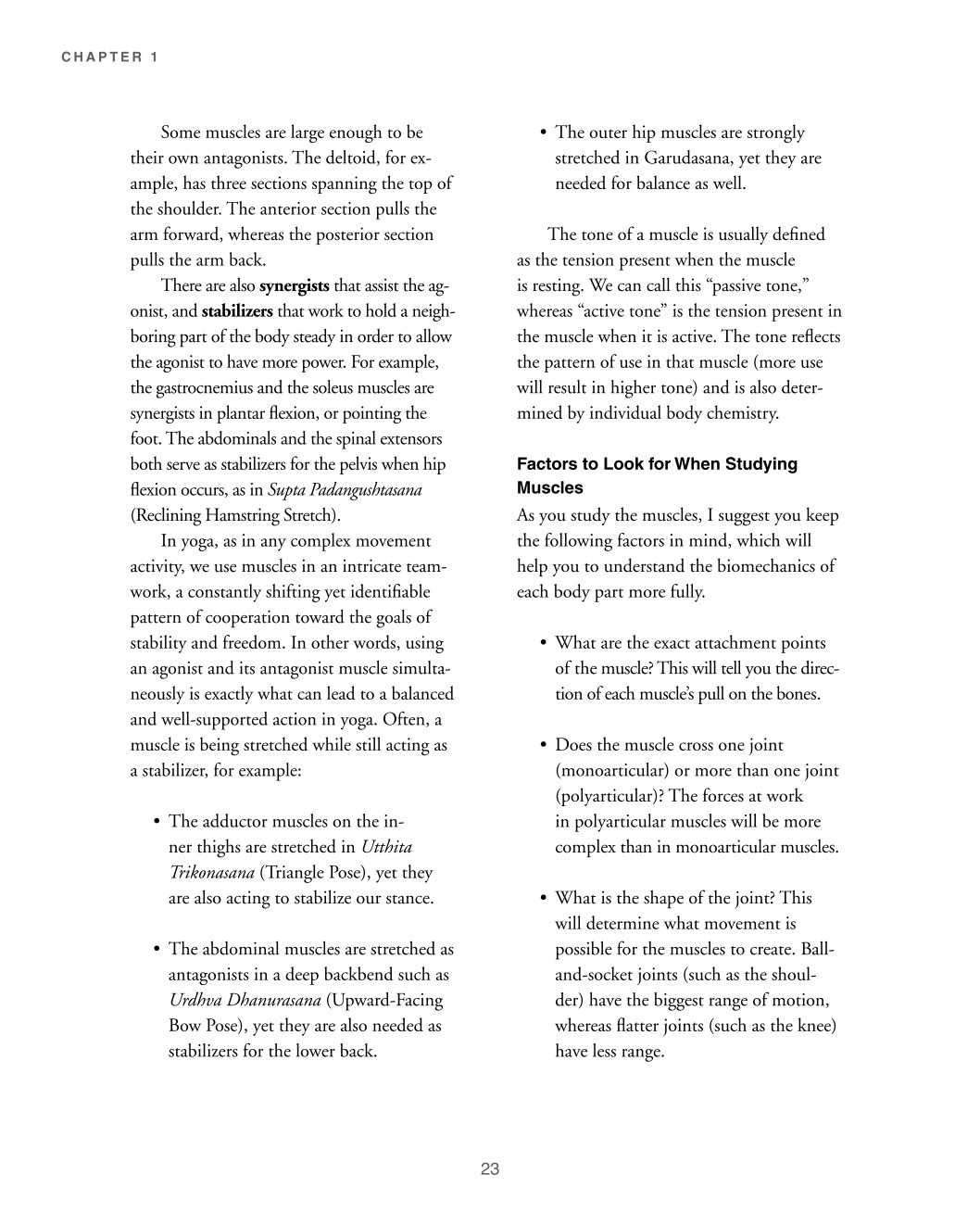

CHAPTER 1
Some muscles are large enough to be their own antagonists. The deltoid, for ex- ample, has three sections spanning the top of the shoulder. The anterior section pulls the arm forward, whereas the posterior section pulls the arm back. There are also synergists that assist the ag- onist, and stabilizers that work to hold a neigh- boring part of the body steady in order to allow the agonist to have more power. For example, the gastrocnemius and the soleus muscles are synergists in plantar flexion, or pointing the foot. The abdominals and the spinal extensors both serve as stabilizers for the pelvis when hip flexion occurs, as in Supta Padangushtasana (Reclining Hamstring Stretch). In yoga, as in any complex movement activity, we use muscles in an intricate team- work, a constantly shifting yet identifiable pattern of cooperation toward the goals of stability and freedom. In other words, using an agonist and its antagonist muscle simulta- neously is exactly what can lead to a balanced and well-supported action in yoga. Often, a muscle is being stretched while still acting as a stabilizer, for example: • The adductor muscles on the in- ner thighs are stretched in Utthita Trikonasana (Triangle Pose), yet they are also acting to stabilize our stance. • The abdominal muscles are stretched as antagonists in a deep backbend such as Urdhva Dhanurasana (Upward-Facing Bow Pose), yet they are also needed as stabilizers for the lower back. • The outer hip muscles are strongly stretched in Garudasana, yet they are needed for balance as well. The tone of a muscle is usually defined as the tension present when the muscle is resting. We can call this “passive tone,” whereas “active tone” is the tension present in the muscle when it is active. The tone reflects the pattern of use in that muscle (more use will result in higher tone) and is also deter- mined by individual body chemistry. Factors to Look for When Studying Muscles As you study the muscles, I suggest you keep the following factors in mind, which will help you to understand the biomechanics of each body part more fully. • What are the exact attachment points of the muscle? This will tell you the direc- tion of each muscle’s pull on the bones. • Does the muscle cross one joint (monoarticular) or more than one joint (polyarticular)? The forces at work in polyarticular muscles will be more complex than in monoarticular muscles. • What is the shape of the joint? This will determine what movement is possible for the muscles to create. Ball- and-socket joints (such as the shoul- der) have the biggest range of motion, whereas flatter joints (such as the knee) have less range.
23